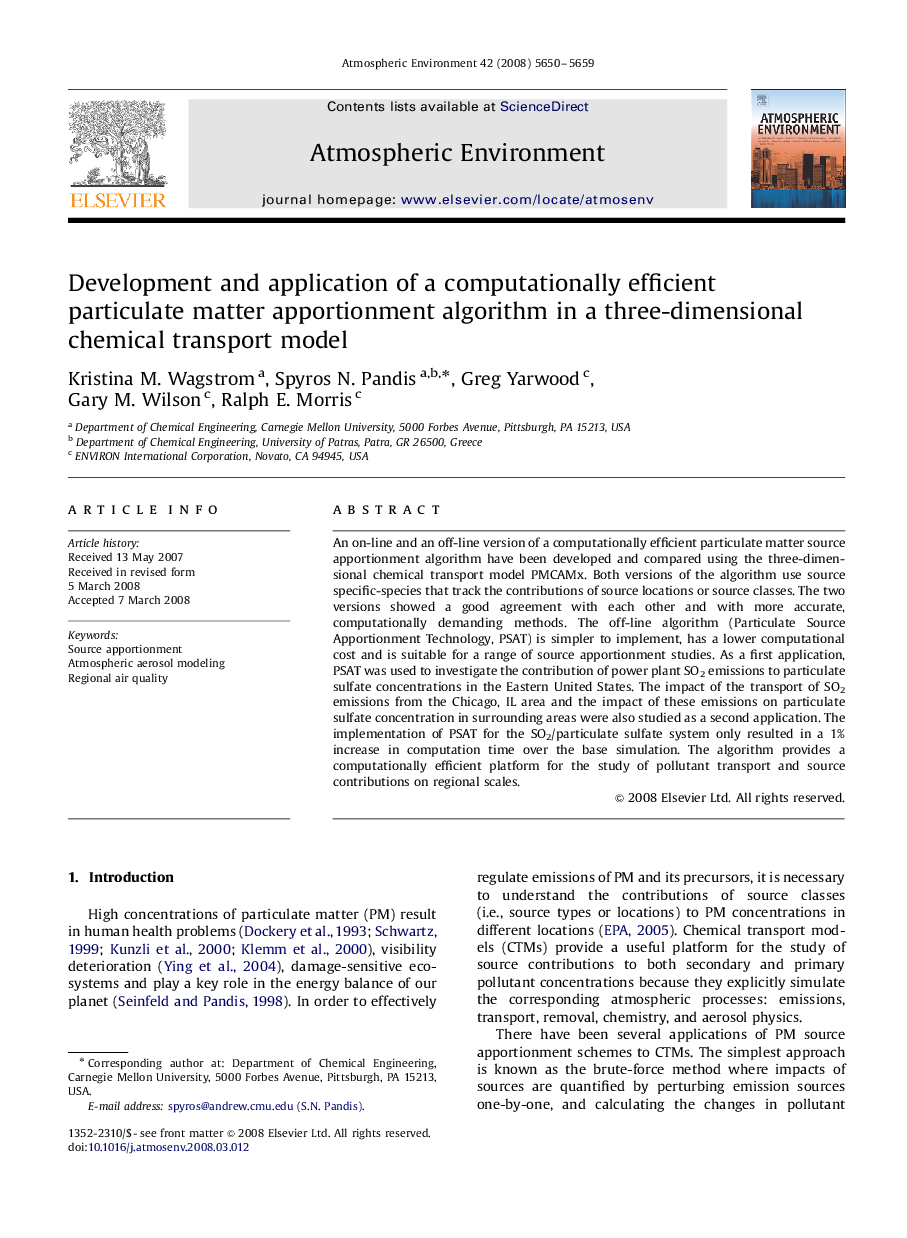| Article ID | Journal | Published Year | Pages | File Type |
|---|---|---|---|---|
| 4442097 | Atmospheric Environment | 2008 | 10 Pages |
An on-line and an off-line version of a computationally efficient particulate matter source apportionment algorithm have been developed and compared using the three-dimensional chemical transport model PMCAMx. Both versions of the algorithm use source specific-species that track the contributions of source locations or source classes. The two versions showed a good agreement with each other and with more accurate, computationally demanding methods. The off-line algorithm (Particulate Source Apportionment Technology, PSAT) is simpler to implement, has a lower computational cost and is suitable for a range of source apportionment studies. As a first application, PSAT was used to investigate the contribution of power plant SO2 emissions to particulate sulfate concentrations in the Eastern United States. The impact of the transport of SO2 emissions from the Chicago, IL area and the impact of these emissions on particulate sulfate concentration in surrounding areas were also studied as a second application. The implementation of PSAT for the SO2/particulate sulfate system only resulted in a 1% increase in computation time over the base simulation. The algorithm provides a computationally efficient platform for the study of pollutant transport and source contributions on regional scales.
